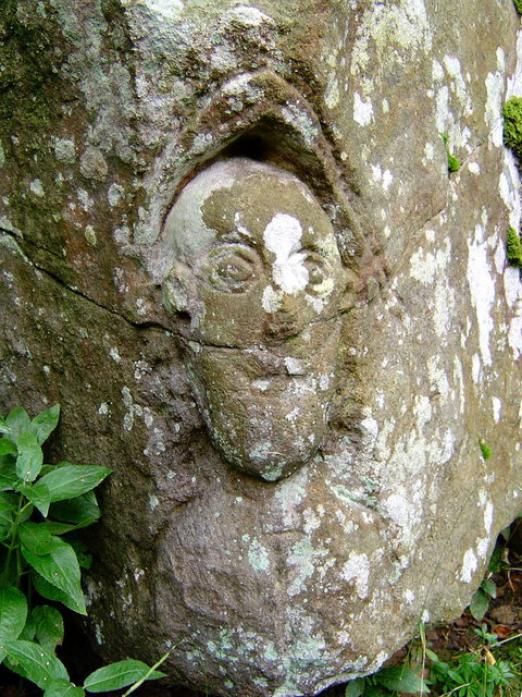
BY GEOFF MILBURN
ONE of my ancestors named Merryweather was a Barney stonemason, one of the large gang of men hard at work on the great edifice which became The Bowes Museum, writes local historian Geoff Milburn.
Another name which emerged from my local research was Denis Coggins who from the 1980s was an antiquities officer at the museum.
Certainly, Denis Coggins is a name well remembered in Teesdale as a chairman of the fell rescue team and local councillor.
His name appears frequently in the Teesdale Mercury archives as he gave talks on local history and archaeology up and down the dale. He worked for Durham County Council as an archaeologist.
Perhaps his name is seen mostly on the front cover of his book, Teesdale in Old Photographs.
While he was living at Low Crag Farm, in Lartington, it was there that he found a strange stone carving in Deepdale woodland. I am curious to know if the existence of the carving has been known since ancient times. Sadly, Denis died in 2003 so I can’t ask him.
In 1991, he published an article, titled A Sculptured Stone Head from Lartington, for the Durham Archaeological Society – of which more later.
More recently, I remembered that over the years I had heard odd casual references to the carving but had passed it several times from 1948 to 1962 without ever realising that it was there.
Most walkers going up to the High Fish Pond pass it without giving a second thought. My father, a local historian, never told me about it, nor did he mention it in his extensive Deepdale diaries.
Many years ago, keen-eyed people walking up Deepdale noticed the strange human head carved into a rock.
It eventually became known as either The Monk’s Head or the Lartington Head, undoubtedly owing to the fact that it was located in the grounds of the large Lartington Hall estate.
Strangely it does not appear on Ordnance Survey maps and people search for it without success.
It is also odd that the Teesdale Mercury archives which date from 1854 appear not to have any references to it.
The report which Denis wrote may be found at the extensive Fitzhugh Archives, in Middleton-in-Teesdale, open normally on Monday and Tuesdays above the bookshop.
The carved head is on the corner of a huge grey sandstone block which looks as if it has fallen from the outcropping cliffs above it.
These have been quarried for roofing slaps, millstones and building materials. There was also quarrying for the new railways in the 1850s.
Denis noted the human head’s lack of hair, a battered nose, no nostrils, small rounded ears, a weak mouth, a long rounded jaw and a short neck. Apart from a weak moustache, there were two large eyes. Speculation rejected a Celtic origin, though an arch above the head indicated perhaps a window, a niche, a headdress or a monk’s cowl.
Reminiscent of church corbels or carvings of religious evangelists, the origin of the carving remains a total mystery. There are just so many questions – how old, who carved it, and why in that remote place? Surely the carving is far older than the Victorian quarrying perhaps suggests.
Well, the carving has been photographed from all angles and for three years, I have looked at the carving on a frequent basis. It is those staring eyes that haunt observers and the depth of the chin seems far too long.
There is a distinct impression that originally there was a moustache and a beard, particularly as no hair was shown on the top of the head. If one looks at the carving in profile then another comes to mind – it is perhaps not a monk’s cowl nor is it an arched widow above the head.
Speculating on the relevance of the early history of Teesdale that might link to a helmet, Romans came for lead mining, and as with Normans their helmets were very different in shape.
Much later, Don Quixote was portrayed with a visored helmet whose shape matched the arch above the monk’s head. The castle of Barnard Castle is made of stone that had to be quarried and Deepdale had stone prior to the early railways which required a great deal of quarrying.
Knights of old bring to mind castles and Lartington Hall dates to 1654 when the Catholic Maine family purchased the manor.
Cotherstone Castle was built in stone in about 1200 and links to Fitzhughs. Perhaps Bernard de Balliol, of 12th century Barnard Castle fame, should be considered or the Neville family. There is also King Richard who married Anne Neville. Just who might that curious old stone portray?
If Catholics were often persecuted, what better than to hide the stone portrait of a famous person than in a wood?
I would like to suggest that the Lartington stone shows a medieval knight or even a king.
Geoff Milburn, local historian





